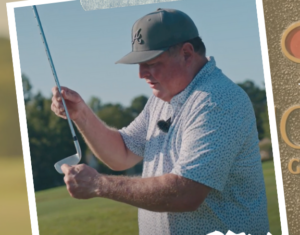Tip Tuesday: Grain Reading from Start to Finish
In this tip, Ted Frick of the Classic Swing Golf School in Myrtle Beach, S.C. walks us through all the considerations you should take into account when reading the grain of the green before you putt on the Myrtle Beach area’s Bermudagrass greens.
Ted Frick:
Hi, Ted Frick, Classic Swing Golf School at the Legends Resort in Myrtle Beach. I’ve got a really cool southern tip for you on grain reading. There’s going to be a couple elements here. Number one, you’re going to see the system. We call it the trifecta, and then you’re going to key on our grass, our Bermudagrass. There’s TifEagles and TifDwarfs and hybrid Bermudas. They have grains. We’ve got to pick up on grain.
Now understand, when it’s your turn to putt, you’ve got 40 seconds to execute your putt. This is going to take a little longer than 40 seconds on this tip because when it’s my turn, I need to be behind the ball to execute the putt. But this is how I would go about doing a grain read. This is what we teach in all of our schools and many of our private lessons.
Here’s my ball on the 18th hole. I’m going to go ahead and mark it. I’m going to look around, observe where the other persons’ balls are because I don’t want to walk in their line, but watch me walk and how I pace to side one. I’m going to go to the other side of the hole. I’m going to pace in yard steps, multiply by three for feet, but I’m going to check out the grain at the hole.
So I comfortably have a 30-foot putt. And as soon as I get to that hole, I’m going to look down into the cup, and whatever side of your cup is browning out, that is the direction the grain is growing towards.
We never, ever hit a putt in the south on Bermudagrass without looking down into the cup. You can clearly observe brown on one side. That’s the direction the grain’s growing towards. You’ll get confirmation. You can even see the grass clippings kind of going over top of the lip. When this ball’s slowing down is when the grain is going to affect the speed of this putt. Speed or pull, because what I’m looking at here is my ball, when it gets to the hole, it’s going to be pulled to the left.
Now, check this out. I’m going to go to side one. A lot of times on side one, you could be standing here for three to four seconds because the only thing you’re doing, you stand in a straight line from where your mark and your ball would be at the cup and then behind the cup. On side one, you’re just trying to pick which side of the hole or which way would the ball break when it gets to the hole.
So if this side of the land was higher and this was lower, it’s confirmation this is going to be my low side. Here’s the cool thing on this putt. If you didn’t read grain, you would see this putt as a straight putt. And that’s why grain is so key. Grain can slow the ball down. Grain can speed the ball up, but grain can pull the ball left and right. Please get grain from this tip.
I see this as a really straight putt, 30 feet, but the grain’s going to give me this move at the hole, and you’ll see it. So I’m going to walk to my ball on what is side two. So now I’m going to go to where I see the ball is going to break when it gets to the hole because of the grain. So I’m going this way.
Every student that I’ve had for the last 28 years knows this talk – every player, from beginner to advanced. You get right in between the ball and the hole. Now, this is where I know it’s 40 seconds when it’s my turn. This is where I will watch the other players’ shots. Their chips, their pitches, their bunker shots, their putts, and then I’m going to watch what’s going on with their ball at the hole here, again, for a double whammy confirmation.
But this is the low side. You’ll see a lot of the tour players, the boys and the girls, they’ll get down and they’ll take a knee on side two because this is the side that gives you the picture of the slope. This is where you might see a crown in the putt. You might see a saddle that they might have to go through. You could see it being level up or down.
So I’m kind of getting the grade of the speed from side two. It’s so important to observe many putts from side two because it’s your speed side. So when it’s my turn to putt, and you can see it’s in the south in the summer, I’ve got my bottle of water up here to stay hydrated. When it’s my turn to putt, I’m going to be on side three. So they hit their shots. Good shot to side three. Now my 40 seconds is up.
Watch how quick this goes. I’m going to use the line on the ball, the way I’ve been trained. Using the line on the ball, set the line down. That’s my line. I got to play this line a little bit to the right of this hole and this 30-footer downhill and at the hole, which you’re going to get moving left. I’ll confirm that line with my dominant eye. This is all part of grain reading and aim. I’m right-eye dominant. So I would close my left eye right now and only confirm that line, my line, with my right eye only. I’m good to go.
If you play with me, in putting, you know I don’t do practice strokes. If I was going to do a practice stroke here, I could tell you with a 30-foot putt, I would use a 30-inch stroke: 15 inches back, 15 inches through because that’s what we’ve been taught, to move it like a pendulum at a two-to-one ratio.
So I’m coming in, covering my fundamentals. I got my A going on. I’m aiming it. I get my grip. I’m a claw guy. My posture, eyes over the ball to slightly inside. Ball position stance with. Taking my putt. Watch this at the hole. Look at this. There you are. That is your confirmation of the grain on this putt. Grain reading. I hope that helps when you come to Myrtle Beach!



